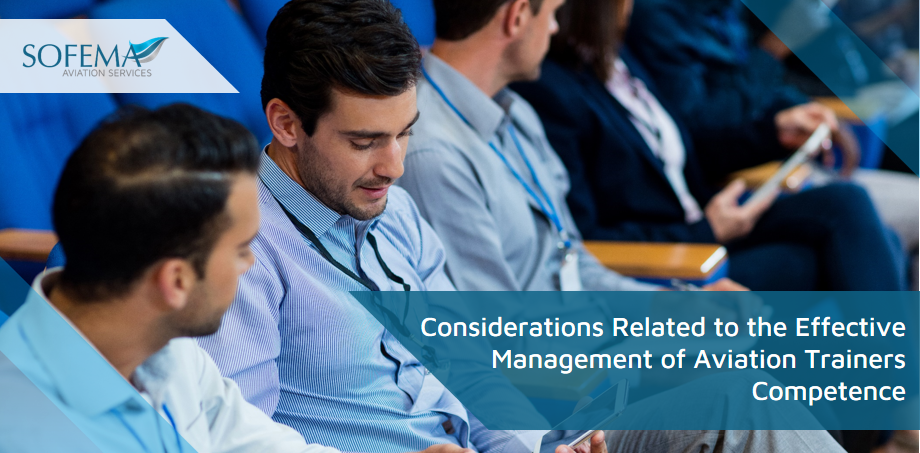Sofema Aviation Services (SAS) www.sassofia.com considers the essential elements of an effective management of aviation trainers’ competence process
Introduction
Managing the competence of aviation trainers is crucial to ensure the highest level of safety and effectiveness in training programs. By implementing these key features and best practices, organizations can effectively manage the competence of aviation trainers, leading to enhanced training outcomes.
Ensure that all trainers meet the regulatory requirements set by aviation authorities. Stay updated with any changes in regulations related to trainer qualifications, recurrent training, and competency assessments.
Note – Always promote a strong safety culture and ethical conduct among aviation trainers. Emphasize the importance of adhering to safety procedures, promoting safe practices, and acting as role models for trainees.
Key Elements to Consider
- Establish Competency Framework
– Develop a comprehensive competency framework that outlines the required skills, knowledge, and behaviours for aviation trainers.
– This framework should be aligned with regulatory requirements, industry standards, and organizational needs. - Competency Assessment
– Regularly assess the competence of aviation trainers using a combination of objective measures such as exams, practical assessments, and observations.
– The assessment should cover technical knowledge, instructional skills, communication abilities, and adherence to safety protocols. - Continuous Professional Development
– Encourage trainers to engage in ongoing professional development activities to enhance their knowledge and skills.
– This can include attending workshops, conferences, industry seminars, and specialized training programs.
– Provide opportunities for trainers to share knowledge and learn from each other. - Performance Monitoring and Feedback
– Implement a system for monitoring trainers’ performance during training sessions.
– Conduct regular observations and provide constructive feedback to trainers on their strengths and areas for improvement.
– Use performance metrics and key performance indicators (KPIs) to objectively evaluate trainer performance. - Recurrent Training and Standardization
– Conduct regular recurrent training for aviation trainers to ensure they stay up to date with changes in regulations, technology, and best practices.
– Standardize training methodologies and materials to maintain consistency across the organization. - Mentorship and Coaching
– Establish a mentorship program where experienced trainers can guide and support new or less-experienced trainers.
– Encourage trainers to seek feedback and guidance from their mentors or coaches to enhance their performance. - Documentation and Record-Keeping
– Maintain accurate and up-to-date records of trainers’ qualifications, certifications, training sessions conducted, and feedback received.
– This documentation provides a clear picture of each trainer’s competence level and helps in identifying training needs. - Continuous Improvement
– Foster a culture of continuous improvement by regularly reviewing and evaluating the effectiveness of the training programs and trainers.
– Collect feedback from trainees, monitor training outcomes, and make necessary adjustments to enhance the trainers’ competence.
Next Steps
Follow this link to our Library to find & download related documents for Free.
For details of available courses please see www.sassofia.com and www.sofemaonline.com
For questions and comments please email team@sassofia.com
Tags:
Assessment Criteria, Aviation Trainer, Aviation Training, Building Competency, Coaching, Improvement, Mentoring, Performance Monitoring, Professional Development, SAS blogs




